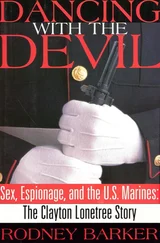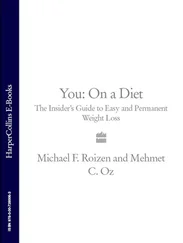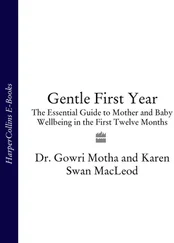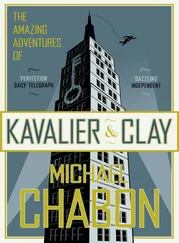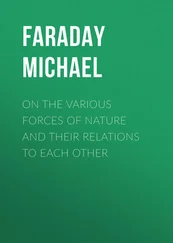ACT IIIn her hut Norma stands over her sleeping children, dagger in hand, contemplating the shame and humiliation they will suffer in the future because of her disgrace. She cannot bring herself to harm them, however, and suggests to Adalgisa that she should leave with Pollione and take the children with her to safety. Adalgisa’s response is to say that she will indeed go to Pollione – but only to try and convince him to return to Norma. In an atmosphere of gathering violence Norma learns that Pollione plans to abduct Adalgisa from the temple. Enraged, she strikes the great shield three times and declares war against Rome. Pollione is captured within the sacred temple but, to save his life, Norma offers herself, a disgraced and blasphemous priestess, as an alternative sacrifice. Confiding her children to Oroveso’s care, Norma prepares to mount the funeral pyre, as Pollione, overwhelmed by her selfless love and courage, commits himself to her once more and walks beside her to the flames.
Music and Background
Norma is Bellini’s masterpiece, written for what the composer called the ‘encylopaedic’ range of expression of the great bel canto singer Giuditta Pasta and closely responsive to the libretto of Felice Romani, which passed through many changes before the composer was satisfied with it. Norma herself is one of the most formidable roles in all opera, calling for extremes of tenderness and fury. Not for nothing does she get taken into the repertory of Wagner singers, and Wagner admitted a personal debt to Bellini’s combination of powerful passion with spacious melodies.
Highlights
Norma’s Act II ‘Casta diva’ is a benchmark aria for sopranos with the substance and finesse to tackle it (and there aren’t many of them). Also in Act II comes a superb scene for the two sopranos – ‘Mira o Norma’.
Did You Know?
 The two great Normas of modern times once appeared in the opera together, in 1952. Maria Callas took the title role, Joan Sutherland the small part of Clotilde.
The two great Normas of modern times once appeared in the opera together, in 1952. Maria Callas took the title role, Joan Sutherland the small part of Clotilde.
 The 19th-century soprano, Therese Tietjens, playing Norma, swung her arm so wide as she struck the gong that she hit her leading man, who collapsed unconscious at her feet.
The 19th-century soprano, Therese Tietjens, playing Norma, swung her arm so wide as she struck the gong that she hit her leading man, who collapsed unconscious at her feet.
Recommended Recording
Joan Sutherland, Marilyn Horne, John Alexander, London Symphony Orchestra/Richard Bonynge. Decca 425 488-2. A classic from the 1960s, magnificently cast in the two soprano roles, with Sutherland in better voice than when she recorded Norma a second time, aged fìfty-eight(!).
I Puritani
( The Puritans)

FORM: Opera in three acts; in Italian
COMPOSER: Vincenzo Bellini (1801–35)
LIBRETTO: Carlo Pepoli; after Ancelot and Saintine’s play, itself based on Sir Walter Scott’s novel
FIRST PERFORMANCE: Paris, 25 January 1835

Principal Characters
The Puritans
Lord Walton Bass
Sir George Walton,his brother  Bass
Bass
Sir Richard Forth  Baritone
Baritone
Sir Bruno Robertson  Tenor
Tenor
Lord Arthur Talbot,a Cavalier  Tenor
Tenor
Henrietta of France, Charles I’s widow  Mezzo-soprano
Mezzo-soprano
Elvira,Lord Walton’s daughter  Soprano
Soprano
Synopsis of the Plot
Setting:A fortress outside Plymouth during the English Civil War
ACT IElvira has finally overcome her father’s objection to her marriage to the Cavalier, Arthur Talbot, leaving Richard Forth a disgruntled and rejected suitor. To Elvira’s joy, distant horns announce Arthur’s impending arrival and he sweeps in in great style, bringing gifts that include a superb white bridal veil for his betrothed. Lord Walton gives Arthur and Elvira a safe conduct pass, saying that he cannot attend the wedding because he must escort a female prisoner, a suspected spy, to London. The prisoner is brought in and Arthur recognises her as the widow of the executed Charles I. Arthur knows that, if anyone finds out who she is, she will be murdered, and he resolves to help her escape. Draping Elvira’s veil over Henrietta’s head, he smuggles her out of the fortress, intercepted only by Richard, who, seeing the woman is not Elvira, is glad to see Arthur go and hopes that he may now win Elvira’s love. On discovering her apparent desertion Elvira loses her reason.
ACT IIElvira’s madness is observed at length in the famous Mad Scene, but the act closes on George Walton and Richard Forth as they confirm their readiness to fight to the death for the Puritan cause and, if necessary, to kill Arthur Talbot.
ACT IIIArthur has now delivered Henrietta into safe keeping and is a fugitive. Nevertheless he risks his life to return to Elvira who is so shocked that she seems, partially, to regain her senses. But her obviously fragile mental state deeply disturbs Arthur and he refuses to leave her, even when he hears his Puritan enemies approaching, although he knows that capture will mean death. But, just as he is about to be summarily executed, news arrives of Cromwell’s victory and the granting of a general amnesty. Elvira’s joy finally restores her to sanity, Arthur is a free man and the lovers are united.
Music and Background
Written for Paris, I Puritani is generally considered the most sophisticated – though perhaps among the less dramatic – of Bellini’s opera scores, with a finer grasp of orchestration (the composer’s undeniable weak point) than he showed elsewhere. There is a pervasive militarism in the music, with prominent brass and percussion, and marching rhythms that bear out Bellini’s own description of his work here as ‘robust’ and ‘severe’. But there is also brilliance in the vocal writing, which demands a strong quartet of principal singers and, especially, a tenor with good top notes.
Highlights
Elvira’s Act II ‘Qui la voce’ is one of the more affecting mad scenes in Italian opera; and the duet ‘Suoni la tromba’, also in Act II, is a famously stirring example of Bellini’s martial music.
Did You Know?
 Bellini wrote no comedies. He always chose to place his characters in what he termed situazioni laceranti – heart-rending predicaments.
Bellini wrote no comedies. He always chose to place his characters in what he termed situazioni laceranti – heart-rending predicaments.
Читать дальше
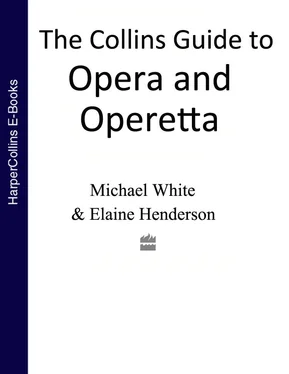
 The two great Normas of modern times once appeared in the opera together, in 1952. Maria Callas took the title role, Joan Sutherland the small part of Clotilde.
The two great Normas of modern times once appeared in the opera together, in 1952. Maria Callas took the title role, Joan Sutherland the small part of Clotilde.
 Bass
Bass

